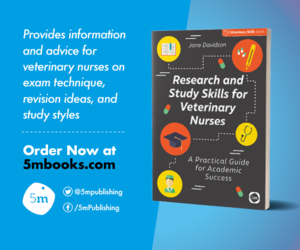Ketamine- and psychedelic-assisted psychotherapy
Comments Off on Ketamine- and psychedelic-assisted psychotherapy“Pychedelics are rapidly becoming a recognised and innovative method of treatment for many mental health crises”

Psychedelics are rapidly becoming a recognised and innovative method of treatment for many mental health crises, including suicidality, refractory depressive disorder, chronic PTSD and others.
Depression is a well-recognised and all-too-common cause of problems in the workplace and domestically. A family member’s depression can have ramifications for the extended family and the children of the depressed person, especially in the case of maternal depression (Barker et al., 2012).
While many sufferers of depression improve with prescribed antidepressants, especially when combined with therapies such as CBT and talking therapies, approximately a third of patients in the UK sadly will remain refractory to treatment or only moderately improve.
The evidence
Over the last 20 years, ketamine, an antagonist of the N-methyl-D-aspartate receptor, has been described to have antidepressant properties. Nowadays, a literature search shows many publications with promising results after a single infusion of low-dose ketamine with a rapid anti-depressive effect which lasts for one to two weeks after the infusion.
For patients who cannot attend a psychedelic clinic, intranasal sprays of ketamine have been approved by the Food and Drug Administration (FDA) for the treatment of depression.
Single-dose ketamine infusion has also been used as therapy for alcohol-use disorder with success. (Dakwar et al., 2019). The authors tested whether a single sub-anaesthetic infusion of ketamine combined with motivational enhancement therapy would affect the drinking of participants in the study.
Ketamine significantly increased the likelihood of abstinence, delayed the time to relapse and reduced the likelihood of heavy drinking days compared with midazolam
Forty participants attended five weeks of once-weekly motivational enhancement therapy. During the second week of therapy, they were randomly assigned to a 52-minute intravenous infusion of ketamine at a total dose of 0.71mg/kg (N=17) or the control midazolam at 0.025mg/kg (N=23).
Alcohol use following therapy was assessed using the timeline follow-back method, with abstinence confirmed by urine ethyl glucuronide testing.
Ketamine significantly increased the likelihood of abstinence, delayed the time to relapse and reduced the likelihood of heavy drinking days compared with midazolam.
So, what are psychedelics?
Ketamine, psilocybin and MDMA are all psychedelic therapies. Traditionally, psychiatric pathologies are treated with maintenance drugs. For example, once you are prescribed an antidepressant which helps you, you take it daily until you stop, if you stop.
With psychedelics, the drug is taken only a few times or sometimes only once, alongside appropriate psychotherapy, and then that’s the end of the pharmacological side of treatment. For some patients who suffer from side effects of traditional pharmacotherapies, this will be welcome. For patients for whom therapy has been unsuccessful, this can be life-changing.
Psychedelics are a loosely grouped class of drugs that can induce altered thoughts and sensory perceptions, and some can induce hallucinations.
Ketamine
There are more and more clinics every year opening in the UK specialising in psychedelic psychotherapy. Ketamine-assisted therapy is the most commonly prescribed treatment for depression, addiction, anxiety, eating disorders and PTSD.
Psilocybin
Imperial College London (Imperial) launched the first psychedelic research centre in the world and has recently conducted trials comparing psilocybin therapy with a conventional antidepressant drug (Carhart-Harris et al., 2021).
Results were quite consistent showing that the psilocybin therapy was really quite markedly better at reducing depressive symptoms
Dr Robin Carhart-Harris, research leader, psychiatrist and neuroscientist
During the above trial, all participants received talking therapy alongside either psilocybin or escitalopram – the conventional antidepressant.
Response rates in the psilocybin group averaged at 70 percent, compared with 48 percent in the escitalopram group.
Neuroplasticity
So how do the psychedelics work?
Psychedelic drugs work on the system in the brain called the serotonin system and especially the part of the system involved in neuroplasticity: the ability of the brain to change, be shaped and adapt.
In Imperial College London’s functional MRI research, they found that psilocybin increased plasticity and opened up new communication pathways
In Imperial’s functional MRI research, they found that psilocybin increased plasticity and opened up new communication pathways. As well as psilocybin, scientists also believe you can use MDMA to access a brain state where brain plasticity increases.
MDMA
Earlier this year, the first published study of an advanced clinical trial using MDMA in the US was found to be highly effective in treating PTSD. Researchers at the Multidisciplinary Association for Psychedelic Studies (MAPS) found that after three MDMA sessions, 67 percent of participants no longer qualified for a PTSD diagnosis and 88 percent experienced a reduction in symptoms (Mitchell et al., 2021).
| These articles are well worth a read for those interested in psychopathologies, and bring hope to those suffering from refractory depression, suicidality, PTSD and alcohol dependence. |

